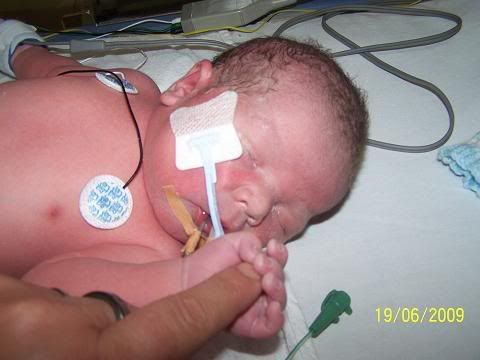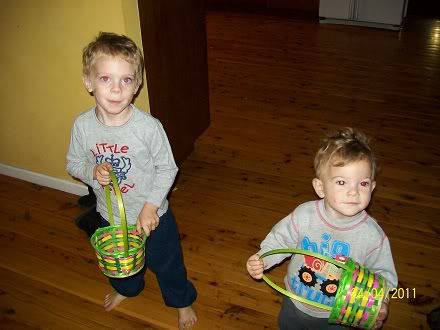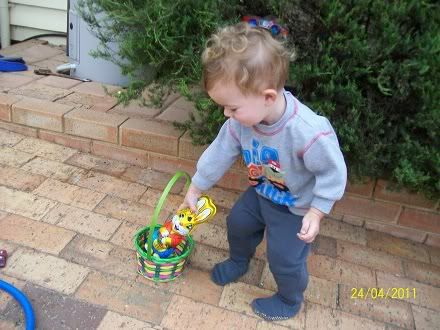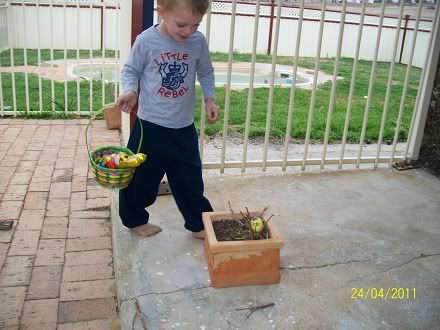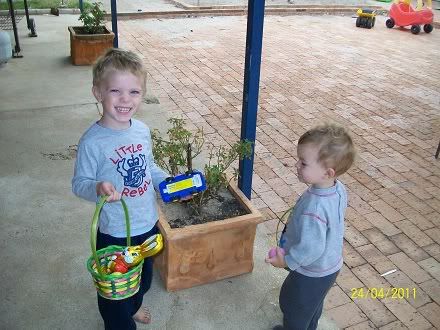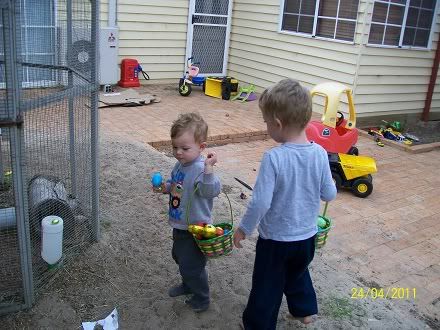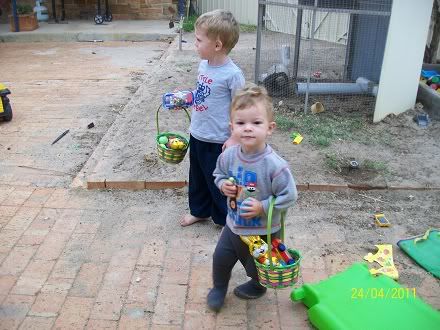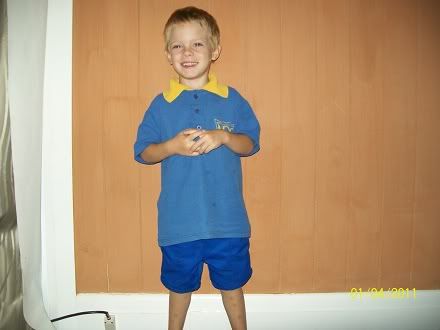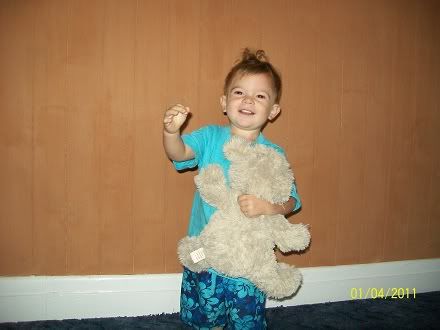Sensory Ideas for Everyday
Handout from Avon and Central Primary Health, Child Development Team, Occupational Therapy Dept.
Most of these are aimed at school kids, but there's no reason why it couldn't be implemented at home with younger kids too.
Quiet Corner:
* Shouldn't be used as punishment
* Talk to the child about having some quiet time to help them settle
* Could be screened off/ a child's tent
* Use big bean bags / rugs / big teddies / door stoppers / big cushions to sit in and cuddle
* Earphones to cut down noise - with or without music / stories
* Treasure bag of quiet visual or tactile toys eg oil paintings, stress ball.
Special Tasks:
* Back pack with something weighty in it, draft resister (in Brendan's words a 'sand snake' :lol: ) around the neck
* Carrying a big box
* Helping - moving wheelbarrows, pulling trolley's
* Dress ups
When Lining Up:
* Some children can't tolerate the proximity of others well - may need individual strategies eg chalk circles to stand in/put at head or end of the line.
* Jumping on spot / marching / stomping
Floor Time:
* Tummy lying to listen / individual mats that they fetch themselves / sit cuddling a heavy toy or bean bag
* Use rhythmic song and movement - slow and calm
* review your expectations - how long do you expect them to sit for? For what part of the day?
* Head squeeze / massage around the circle, given by an OT
* If one child needs extra help to settle - on lap / flexed position eg arms in and legs crossed - give them a bear hug.
Structure of the Day:
* Play doh - standing up, rolling out
* Wiping down chalk board, easels, helping clean tables
* "Painting" the outside walls with water on big paintbrushes
* Exercises - faster and vigorous to energise, to calm do slow, gentle movements - head rolls, toe touches, push-ups (with bent knees or against the wall, trying to lift self off the ground while sitting), be a tree waving slowly in the breeze etc - keep breathing slow, even and gentle - use images like little waves coming in and out at the beach.
* Digging or other heavy work before coming inside
* Carrying, "rearranging" the room
* Blowing games, eg before snack time - might be hard to control in a large group.
Most of these are aimed at school kids, but there's no reason why it couldn't be implemented at home with younger kids too.
Quiet Corner:
* Shouldn't be used as punishment
* Talk to the child about having some quiet time to help them settle
* Could be screened off/ a child's tent
* Use big bean bags / rugs / big teddies / door stoppers / big cushions to sit in and cuddle
* Earphones to cut down noise - with or without music / stories
* Treasure bag of quiet visual or tactile toys eg oil paintings, stress ball.
Special Tasks:
* Back pack with something weighty in it, draft resister (in Brendan's words a 'sand snake' :lol: ) around the neck
* Carrying a big box
* Helping - moving wheelbarrows, pulling trolley's
* Dress ups
When Lining Up:
* Some children can't tolerate the proximity of others well - may need individual strategies eg chalk circles to stand in/put at head or end of the line.
* Jumping on spot / marching / stomping
Floor Time:
* Tummy lying to listen / individual mats that they fetch themselves / sit cuddling a heavy toy or bean bag
* Use rhythmic song and movement - slow and calm
* review your expectations - how long do you expect them to sit for? For what part of the day?
* Head squeeze / massage around the circle, given by an OT
* If one child needs extra help to settle - on lap / flexed position eg arms in and legs crossed - give them a bear hug.
Structure of the Day:
* Play doh - standing up, rolling out
* Wiping down chalk board, easels, helping clean tables
* "Painting" the outside walls with water on big paintbrushes
* Exercises - faster and vigorous to energise, to calm do slow, gentle movements - head rolls, toe touches, push-ups (with bent knees or against the wall, trying to lift self off the ground while sitting), be a tree waving slowly in the breeze etc - keep breathing slow, even and gentle - use images like little waves coming in and out at the beach.
* Digging or other heavy work before coming inside
* Carrying, "rearranging" the room
* Blowing games, eg before snack time - might be hard to control in a large group.


